Marble lion statues have long been a prominent feature in various cultures and are often seen guarding entrances, palaces, and important buildings. Lion marble statues often have a ball under one of their paws for several reasons. One common explanation is that the ball represents power and control, symbolizing the lion’s dominance and authority. The ball may also symbolize the world or the globe, showcasing the lion’s mastery over its domain. Additionally, the ball could have a practical purpose, serving as a counterweight to stabilize the statue. Overall, the ball adds aesthetic appeal and symbolism to the lion statue, enhancing its visual impact and cultural significance. However, if you want to understand in detail why the lion sculpture has a ball, you also need to think about it from the perspective of cultural and historical background differences.
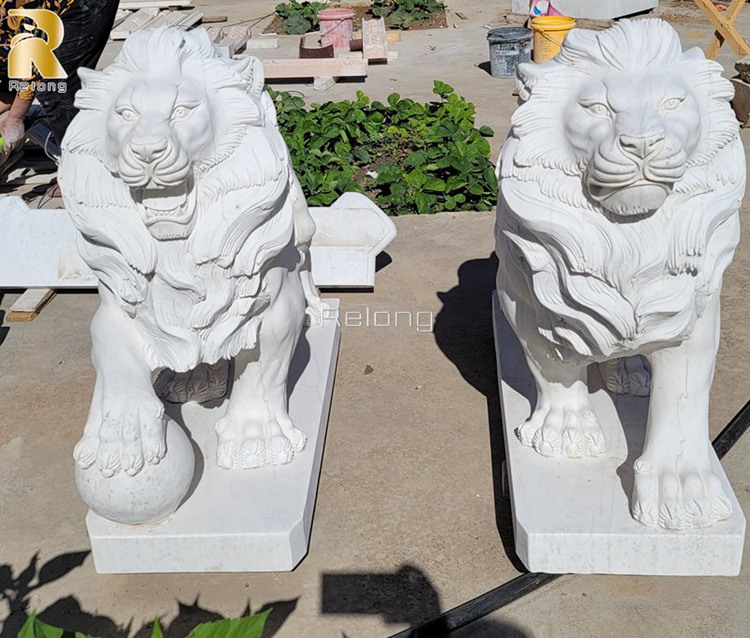
The Meaning Behind the Ball in Lion Statues:
The meaning behind the ball in lion statues has been a subject of curiosity and speculation for centuries. While there is no definitive answer, various interpretations, and theories have emerged to explain the presence of this intriguing element. Let’s delve into some of the possible meanings associated with the ball in lion statues:
Symbolizing the World or Universe:
The ball in outdoor marble lion statues is often interpreted as a representation of the world or the universe. It symbolizes the lion’s dominion over the earth and its role as a guardian of the land. The round shape of the ball may suggest the globe or celestial bodies, emphasizing the lion’s authority and control.
Signifying Wealth and Prosperity:
Another interpretation of the ball in the lion statue for the home entrance is its association with wealth and prosperity. The ball could symbolize a precious object, such as a gem or a pearl, signifying abundance and fortune. This symbolism aligns with the lion’s historical connection to royalty and power.
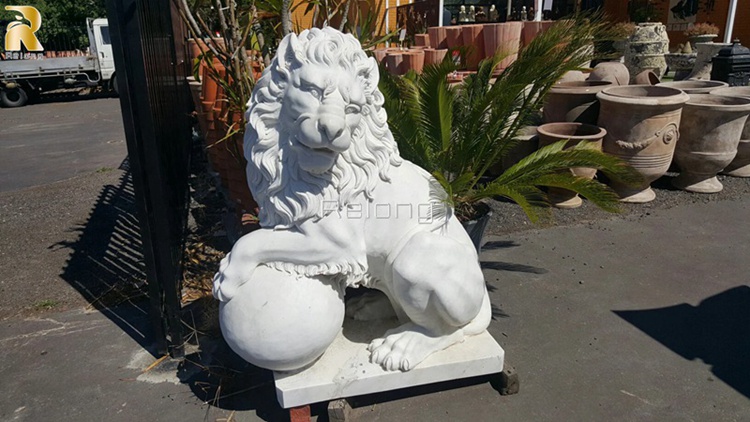
Acting As a Celestial Orb or Cosmic Object:
Some theories propose that the ball in lion statues represents a celestial orb or cosmic object, such as the sun or the moon. This interpretation links the lion to celestial beings and celestial forces. It underscores the lion’s role as a celestial guardian, watching over the heavens and providing protection from supernatural threats.
It’s important to note that the meaning of the ball in lion statues could vary across different cultures and historical periods. For example, in Chinese culture, lion statues known as Foo Dogs often feature a ball under their paws. In this context, the ball is believed to have the power to ward off evil spirits and bring good luck.
Furthermore, the ball in European lion statues, particularly those found in architectural structures, may have heraldic significance. It can be associated with dominion and territorial control, reflecting the lion’s role as a protector of a specific region or institution.
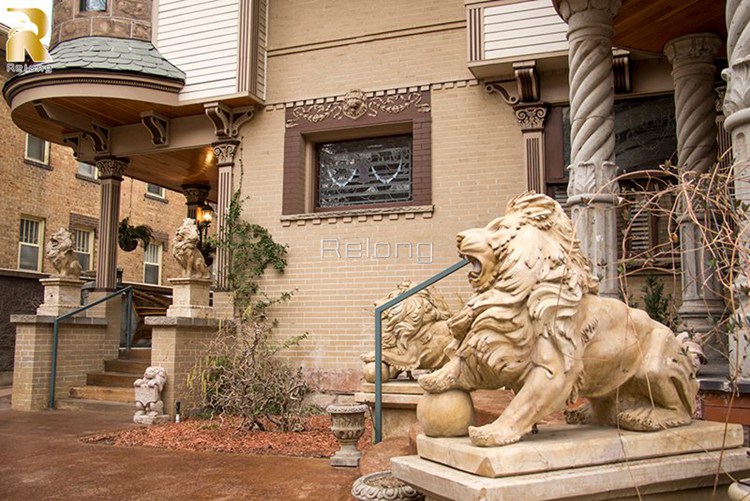
Marble Lion Sculpture In Different Cultural and Historical Contexts:
The ball in marble lion statues serves practical purposes that go beyond symbolism and aesthetics. Let’s explore some of the practical reasons for the inclusion of the ball in these statutes:
Structural Significance and Balance:
The ball in lion statues contributes to their structural integrity and stability. Placed strategically under the lion’s paw or within its reach, the ball counterbalances the statue’s weight distribution. By providing a solid base, the ball helps ensure that the statue remains balanced and stable, even in outdoor settings where it may be exposed to wind or other external forces.
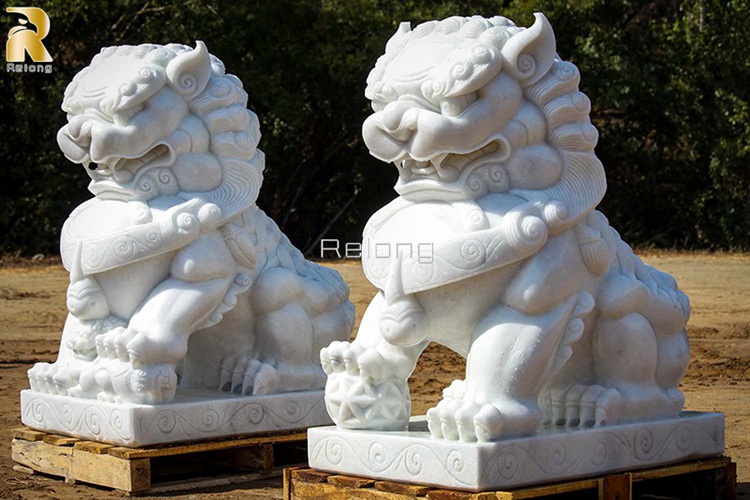
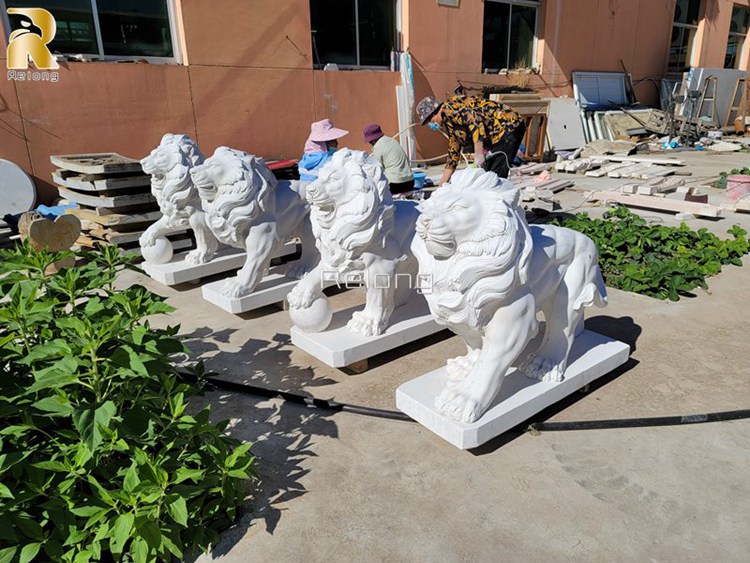
Role of the Ball in Supporting the Statue’s Weight:
Marble lion statues could be quite heavy, and the ball serves as a supportive element. It helps distribute the weight of the statue more evenly, reducing stress on specific points or areas. This helps prevent structural damage and prolongs the lifespan of the statue.
Technical Considerations in Marble Statue Construction:
When sculpting a marble lion statue, the ball may be included as part of the original design to address technical considerations. The presence of the ball can help sculptors maintain proportion and balance during the carving process. It provides a reference point and assists in achieving the desired aesthetic outcome.
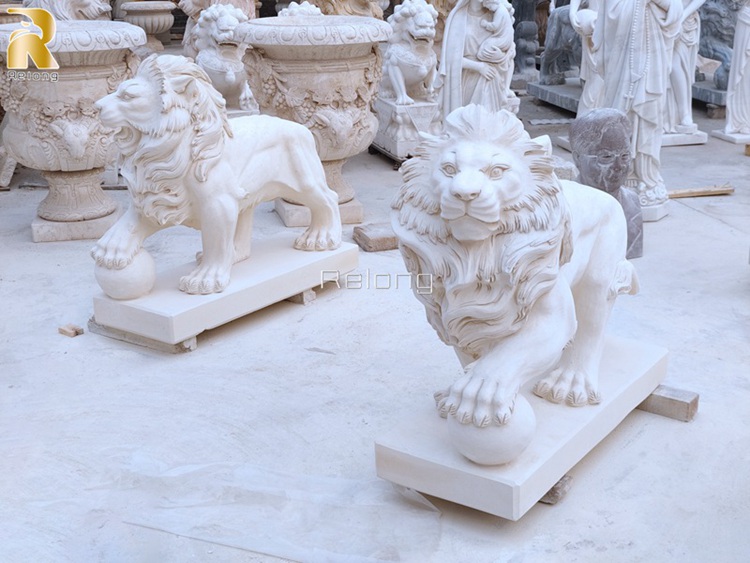
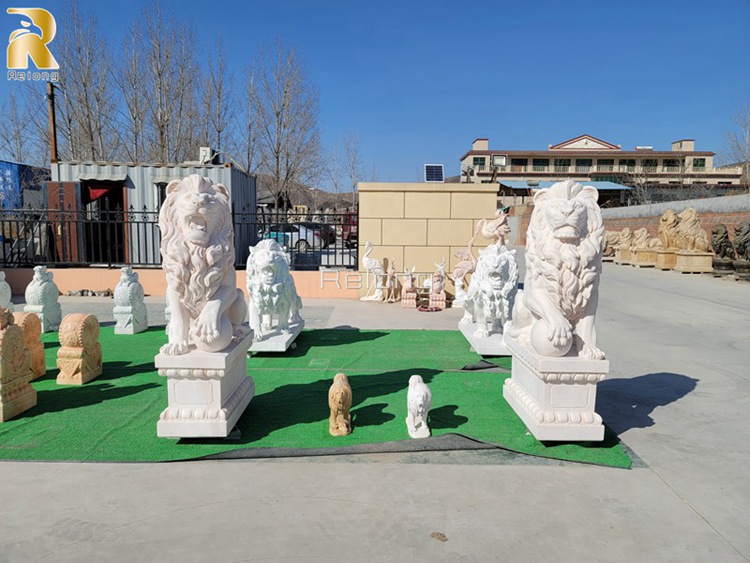
It’s worth noting that while the ball in marble lion statues serves practical purposes, these considerations are often intertwined with symbolic and cultural significance. The practicality of the ball’s inclusion complements the overall artistic vision and intention behind the statue, further enhancing its visual appeal and meaningful representation.

